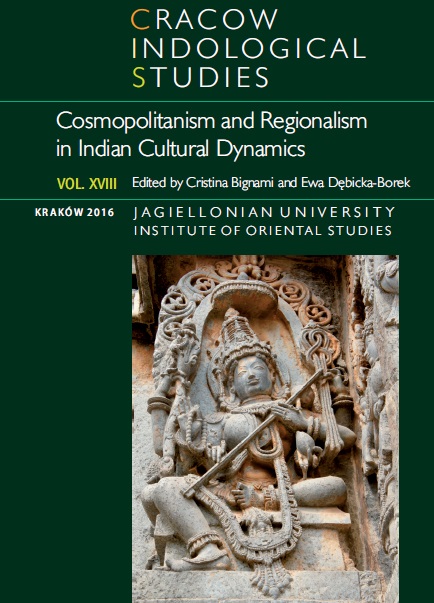Sculptures as the Trademark of Sovereignty in the Hoysaḷa Kingdom
Sculptures as the Trademark of Sovereignty in the Hoysaḷa Kingdom
Author(s): Cristina BignamSubject(s): History, Cultural history, Ancient World
Published by: KSIĘGARNIA AKADEMICKA Sp. z o.o.
Keywords: Hoysaḷa; Kālāmukha; Karnataka; royal legitimation
Summary/Abstract: Among the various sculptures created by Hoysaḷa artists between the 12th and 13th centuries emerges a curious iconographic couple: a man wearing a long robe and an unusual headdress, accompanied by a woman, completely naked, with sandals on her feet, surrounded by snakes. Both these figures have a stick. The recurrence of this subject in many temples and the important position in the register of sculptures suggest that this iconography was already codified in the early 12th century, that is during the rise of the dynasty. The focus of my study is to analyze the development of these representations in correlation with the religious and political context: at the beginning the two iconographies were sculpted together, while in the course of time they began to be carved separately. This new exploration adds to the iconographic analysis and the study of the epigraphic sources and it aims at relating the artistic production with the construction and legitimation of the dynasty. Controversial interpretations of the meaning of these representations open up a lively debate about local cults in medieval Karnataka and the versatile royalty of the Hoysaḷa dynasty.
Journal: Cracow Indological Studies
- Issue Year: 2016
- Issue No: 18
- Page Range: 169-209
- Page Count: 50
- Language: English

